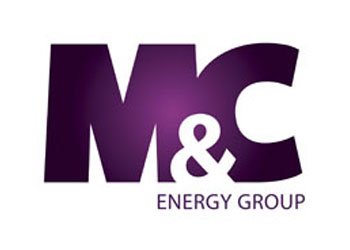What is Energy Risk Management (ERM)?
Over four years, UK wholesale energy prices have doubled, halved and doubled again. No-one predicted these price movements or the extent of market volatility.
The fixed-price contract renewal often comes as a shock to an organisation, yet increased input costs cannot always be passed on. Energy bill volatility can be the difference between profit and loss.
Buying energy flexibly on wholesale markets is not a company managing price risk. Effective energy risk management accepts energy market volatility, but exposure can be managed through a rigorous process of strategy, governance, control and monitoring to deliver an energy budget meeting corporate objectives.
This can be achieved by putting a robust structure in place to constantly monitor the corporate energy portfolio’s consumption, network charges and performance to market. With strict corporate governance, and a risk policy consistent with chosen strategy, the energy spend can transform from a highly emotive board-level subject regularly giving nasty surprises, to a strategic asset helping deliver corporate objective.
The energy strategy should be capable of responding to changes in corporate objectives, e.g. across financial years.
A robust risk-managed approach to the energy challenge can deliver a paradigm change in how a company views its costs. Speculation, emotion and “what if” scenarios are replaced by a flexible approach turning energy into a powerful strategic asset.
How has ERM been affected by the recession?
The recession brought a collapse in commodity forward prices, including gas and power, in late 2008/early 2009. This bear market was preceded by the $147 per barrel peak in oil price at the height of the commodity boom.
These price shocks and subsequent economic difficulty affected energy risk management. Many energy buyers took fright at the rapidly rising cost of fixed deals and opted to fix price at or near the peak of market, often for an extended period, only to be stranded when markets crashed – a huge hit to cost competitiveness.
Many purchasers vowed never to fix prices long term again and considered more flexible contract options at renewal. Equally, many organisations with flexible arrangements panicked as the market rose, and hedged their positions to place a cap on the upside risk, without having facilities to ‘unlock’ or sell volume back to the market.
A subset of these customers was then hit by significant imbalance charges because of their falling consumption breaching ‘take or pay’ clauses related to their hedged volumes. Businesses suffered from lower demand, and penalties resulting from over-hedged positions.
The outcomes were an increased interest in flexible purchasing as opposed to fixed; robust risk management instead of emotion-driven market watching; and demand for more sophisticated products offering ‘sell back’ features and more regular options to re-declare volumes.
During the recession, the restriction on credit facilities impacted on product availability, while there was a tendency for buyers to take a shorter-term forward hedging view than previously. The latter was enhanced by the wholesale market returning to a state of contango.
What aspects of ERM do you see changing in the near future?
M&C Energy Group surveyed the views of attendees at its Global Energy Conference in Munich. Buyers and decision-makers for some of the largest energy users in Europe set out their views on future energy prices, decarbonisation and business impact.
The respondents expected end-user industrial energy costs to rise between 20% and 60% by 2015, and higher by 2020.
Between 46% and 36% believed decarbonising the EU economy, although worthwhile environmentally, mostly represents a threat not a positive business impact.
Asked to order priorities, ‘affordability’ and ‘security of supply’ came out strongly ahead of ‘sustainability’.
Regardless of future price development, M&C sees the trend of smart energy risk management moving further from a purchasing strategy dominated by emotional responses to market movements. This should be replaced by calm, rational responses to events – “if the market rises, we take this action,” underpinned by a realistic and robust risk policy allied to effective objective setting, strong corporate governance, measurement and controls, and the appropriate tools.
Other factors will influence risk management and decision making, e.g. on-site generation. Looking to take advantage of incentives to generate from low carbon sources will open up new dimensions in investment risk appraisal and optimising self-generation for use on-site or for export in combination with the network ‘import’ requirement.
Potential exists for developing a multi-faceted and integrated approach to risk-optimising all aspects of an organisation’s energy portfolio.
The prospect of increased coupling of Europe’s power grids has potential to improve access to markets and products, while offering larger companies the opportunity to further leverage their continental portfolio.
If you think M&C Energy Group can help you then contact them at M&C Energy Group Limited, Claymore House, Enterprise Way, Dunfermline, Fife KY11 8PY. Tel: +44 (0) 1383 745000, Fax: +44 (0) 1383 745153, email: [email protected]





